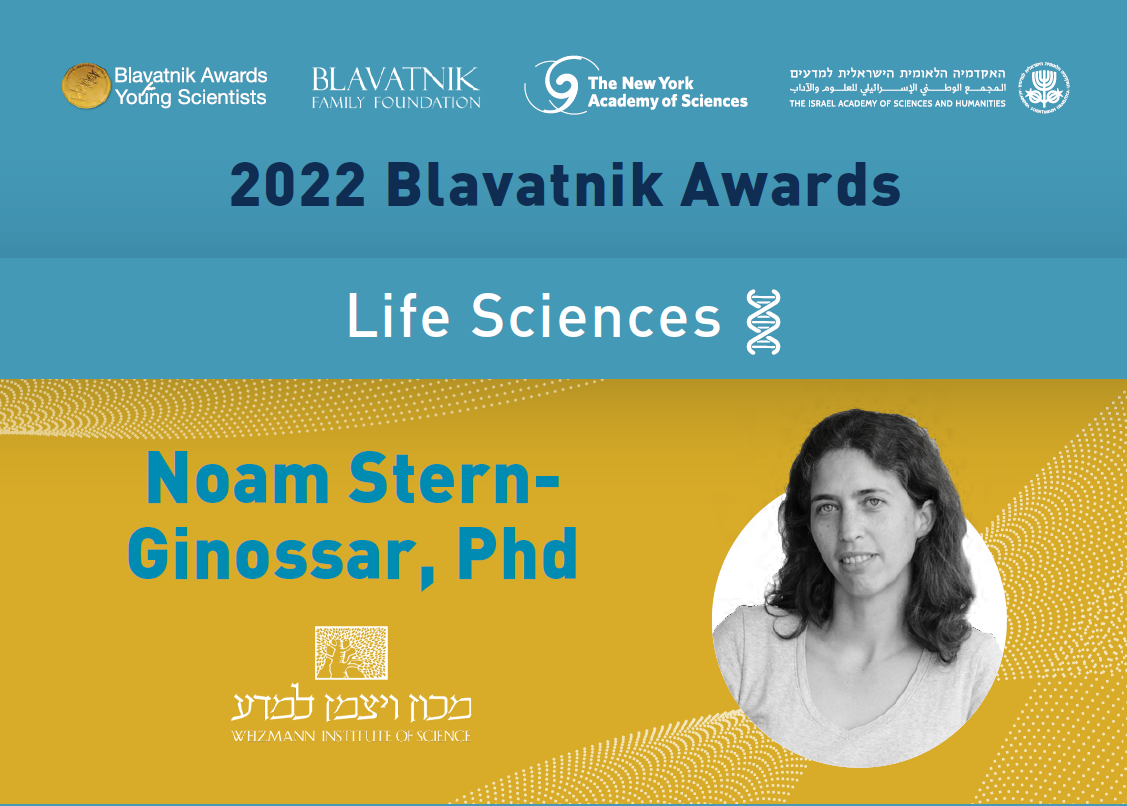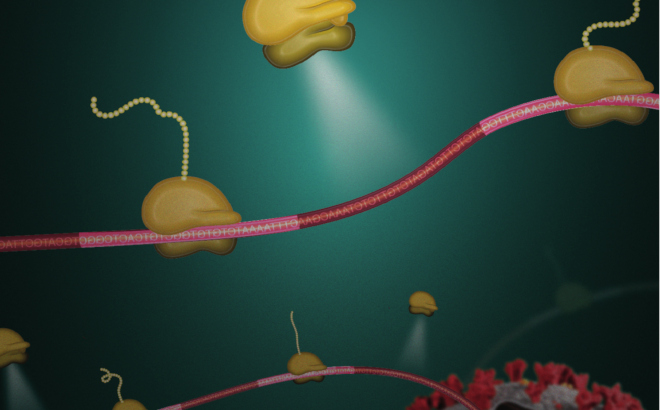
Prof. Noam Stern-Ginossar, 43, from the Department of Molecular Genetics at the Weizmann Institute of Science, smiles when she says that she was interested in viruses and researched them "even before all of humanity was shaken by the corona pandemic and everyone became an amateur virologist. Today, viruses need less 'promotion' than in the past," she says, "because the importance of viral research has become clear. But apart from the medical importance," she explains, "viruses are just amazing. After all, they themselves do not invent anything—they have a very small and limited genome. But when they manage to get their genome into our cells, they very quickly take over and make the cells into machines, which serve them and produce new viruses."
Prof. Stern-Ginossar's research uses innovative methods of analysis to examine how human viruses work, and from this, learns about the different mechanisms of our cells. "If we look at the activity of viruses we can learn about the way they harm our cells, but we can also learn a lot about the way our cells work. Viruses will always target the most important and basic mechanisms in the human cell, and we want to discover them," she says.

Since 2014, Prof. Stern-Ginossar’s laboratory at the Weizmann Institute of Science has used sophisticated and advanced technological means to accurately characterize the most basic processes that occur when a cell is infected with a virus. These studies and the methods developed by Prof. Stern-Ginossar to carry them out are part of the reason for her selection as the Life Sciences Laureate of the 2022 Blavatnik Awards for Young Scientists. Prof. Stern-Ginosar will receive US$100,000 in an unrestricted funds, join the prestigious list of Laureates in Israel and around the world, and participate in meetings and symposia with the honorees of the prestigious awards program, which operates in the United States, the United Kingdom and Israel. In Israel, the program was launched in 2017 in a collaboration between the Blavatnik Family Foundation, the Israel Academy of Sciences and Humanities, and the New York Academy of Sciences.
"Monitoring viral activity," says Prof. Stern-Ginossar, "allows us to both understand intracellular processes and better understand how viruses work." Among other things recently investigated in the Stern-Ginossar laboratory was the SARS-CoV-2 virus, which is responsible for the global corona epidemic over the past two years. "The corona is a relatively large virus. Its genome is made up of 30,000 bases, and although the human genome consists of billions of bases, the virus replicates within eight hours from the moment it enters a cell to completely reverse cellular activity and convert it into a virus factory. It's unusual, and we are trying to learn from its success in doing that.”
Prof. Stern-Ginossar’s innovative methods of analysis for this study were among the reasons for winning the award. "There has been a revolution in the last decade in our ability to understand genetic information. Relative to the past, today we can easily take cells and see comprehensively all of the genetic material expressed in them. If we look carefully, we can really see the dynamic processes, including infection. These methods, which show how a cell operates when it is infected with a virus, are bringing new insights that we did not know before," she says.
Prof. Stern-Ginossar says that her laboratory recently tested part of the mechanism of action of the new coronavirus. "We wanted to understand how the virus takes over the cell," she explains. "We knew that one of the things that viruses depend on the most is the ribosome—the intracellular 'machine' that translates genetic information in the form of RNA into proteins. Viruses do not have ribosomes; they are simply receptacles for stored genetic information, and the first thing they need is to take over our ribosomes that will turn their genetic information into proteins. To do this, they need to develop a mechanism that will ensure that when they enter the cell, the ribosome will actually translate their RNA and not the cell’s native RNA.
"We tried to understand how the corona virus does this," she says, "and we found that it uses several different mechanisms. For example, the first thing it produces inside the cell is a scissor-like protein that knows how to cut and break down all the RNA that the cell has, but does not harm its own RNA." She says that this discovery may one day become a drug target to neutralize viral activity, but stresses that specific medical questions are very far from the research in her laboratory. "We aim to do basic science to understand processes, not research aimed at medicine. Of course our ambition is that if we look at things and discover new mechanisms, someone will be able to develop technology that can use them."
Prof. Stern-Ginossar says that she came into academia and her field of research out of an interest in nature. "As a child, I really enjoyed nature walks," she says. "This may have been the reason I started studying for a bachelor's degree in biology, but I was thinking more about the fields of ecology and the environment," she adds, "then I discovered the existence of this whole molecular world, and it amazed me." She went on to pursue a master's degree (“that was when I really fell in love with the field”, she says) and a doctorate at the Hebrew University of Jerusalem., on “Modulation of NK cells cytotoxic activity”. I then went to pursue a postdoctoral fellowship at the University of California, San Francisco.”
When asked how she explains scientific breakthroughs and discoveries, Prof. Stern-Ginossar replies that ideas come to her quite randomly—"when I read something, when I walk down the street or just in my free time," she expands, "but another important key is gatherings and interactions with people." “They grant you a certain peacefulness, freedom from the day-to-day tasks, a chance to hang out with other researchers and think creatively.” In that sense, she says, “the corona pandemic has certainly changed things and those meetings are very much missing.”
"Academic awards provide a boost and motivation," she says, adding that she was very happy when she was informed that she had been chosen as the Blavatnik Awards Laureate. "The process of research is full of doubts. You are never sure that you are doing something right until it succeeds, but upon receiving acknowledgement like this you feel you're on the right track, especially when it comes to such a prestigious science award. This is an important recognition, both for me and for my entire laboratory."